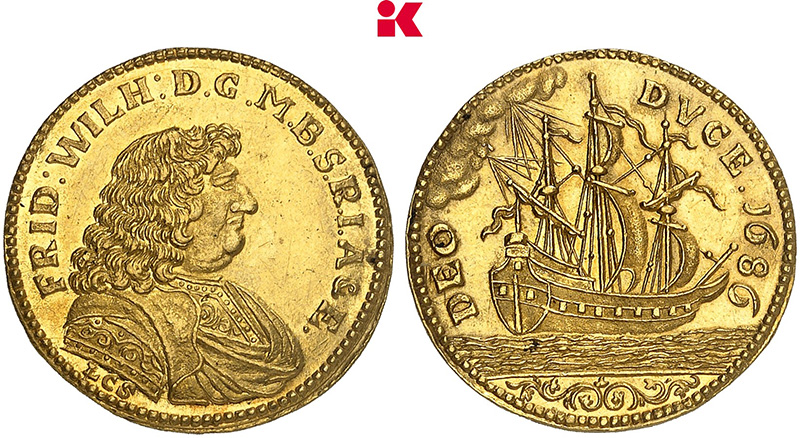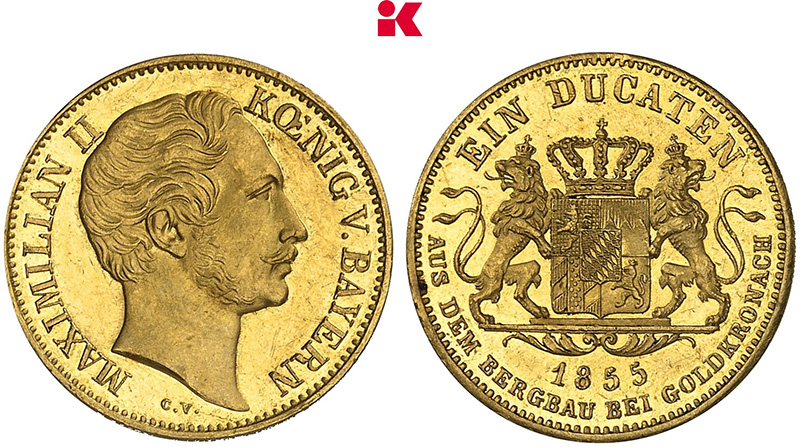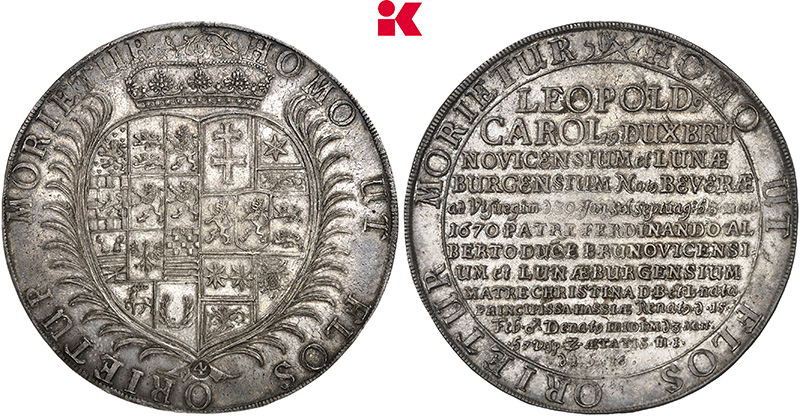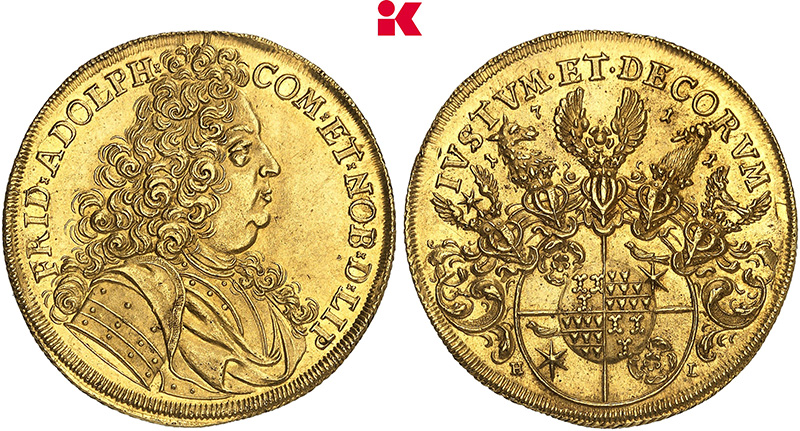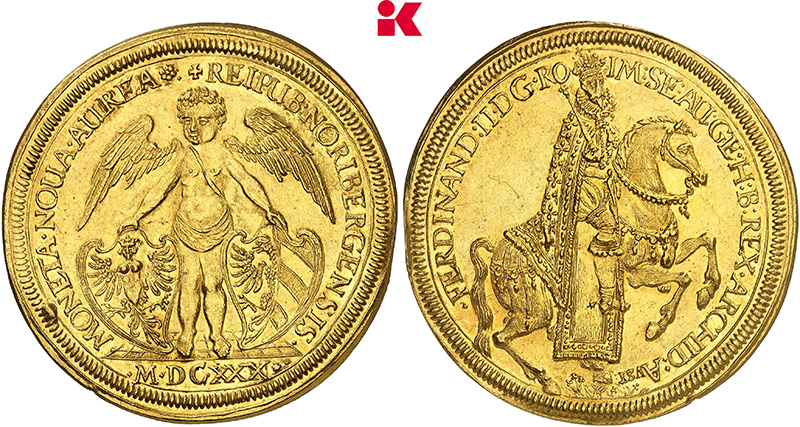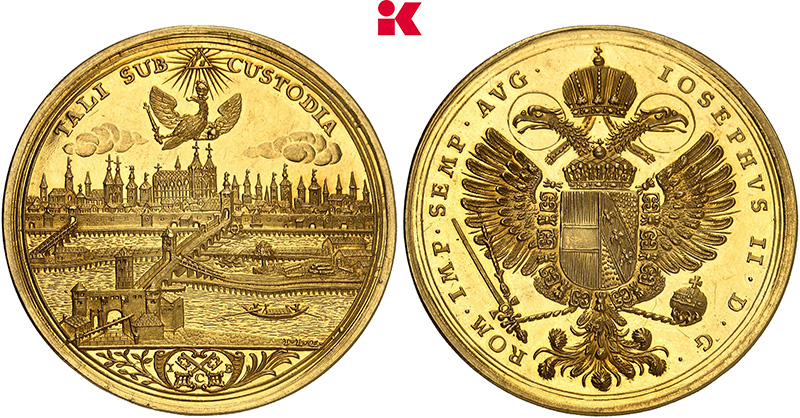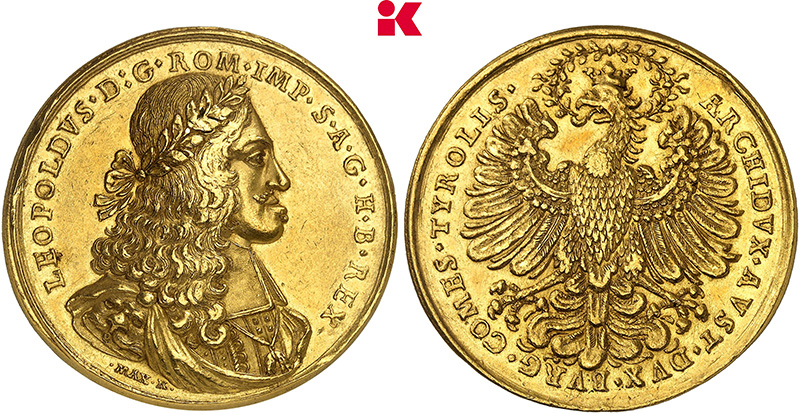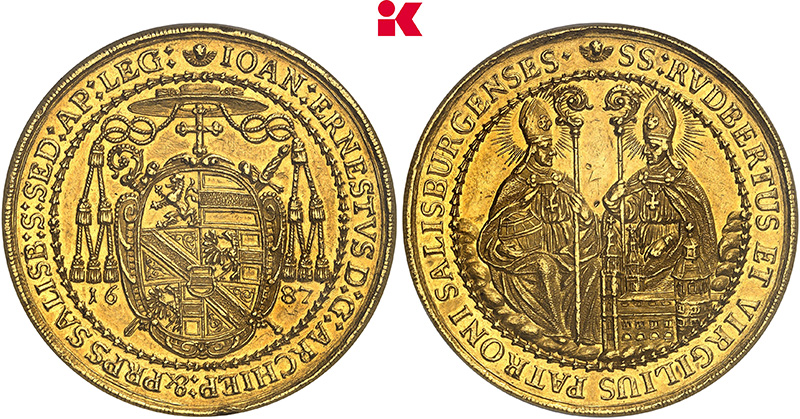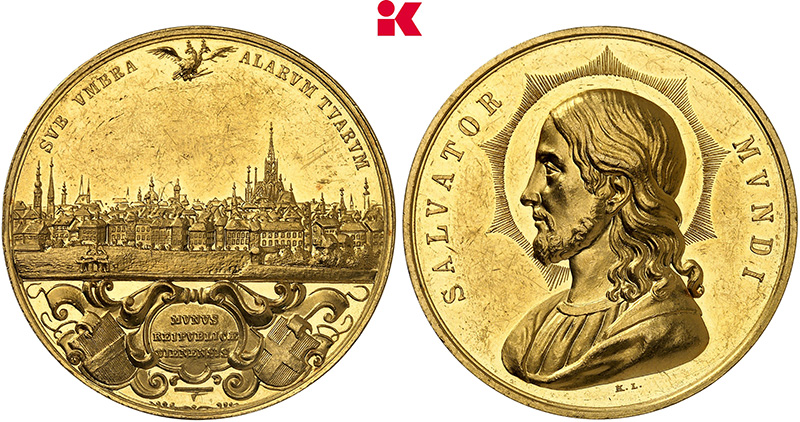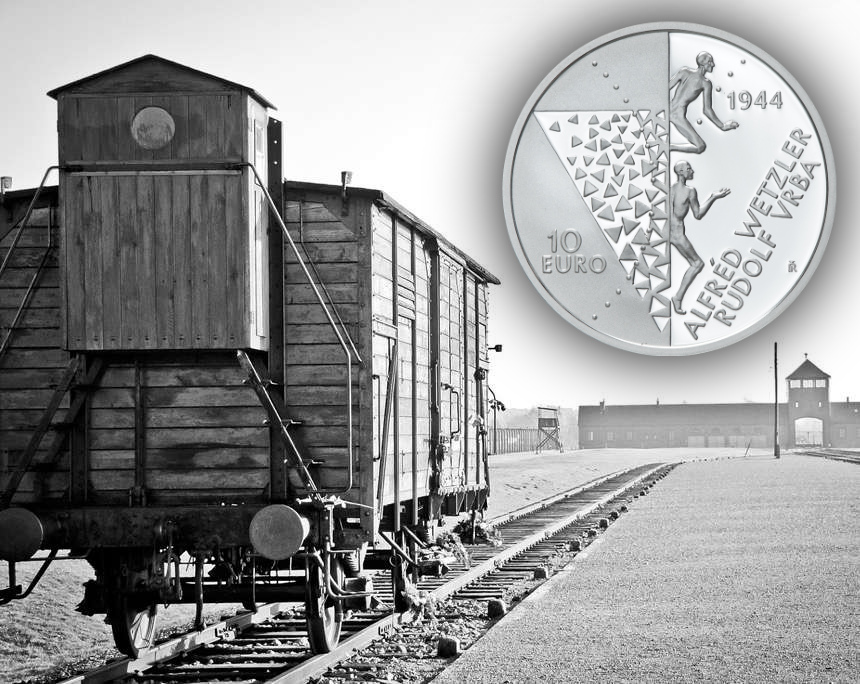New Coin From Slovakia: 80th Anniversary of the Vrba-Wetzler Report
In the summer of 1944, the world became aware of the Holocaust thanks to two young men: Rudolf Vrba and Alfréd Wetzler. The National Bank of Slovakia honors them with a €10 collector coin, produced by the Kremnica Mint. The coin represents many things – bravery, moral courage, responsibility and the power of public opinion.
When the prisoners of the Auschwitz concentration camp lined up for roll call on 7 April 1944, numbers 44,070 and 29,162 were missing. We know the names of these two brave men. They were the Jewish Slovaks Rudolf Vrba and Alfréd Wetzler. They did not escape to save their own lives. They wanted to inform the world about what was happening in Auschwitz. They were convinced that the governments of democratic nations would not simply stand by and watch as thousands of people were gassed to death.
Rudolf Vrba worked as registrar (Blockschreiber) in the camp. From his workplace he could see the so called “Jewish ramp” where all the trains arrived. He diligently counted them, memorizing the exact number of carriages that transported all those to Auschwitz who were murdered in the gas chambers between April 1942 and April 1944. With this piece of explosive information in mind, he planned his escape together with Alfréd Wetzler. It was an indescribably dangerous plan, and they succeeded only because they were helped by both fellow prisoners and Polish citizens.
On 21 April 1944, they crossed the border to Slovakia. When they arrived in Žilina, they found support in the Slovak Jewish Council. The two men dictated what they had seen to a stenographer, who completed the report in Slovakian on 27 April 1944. While the report was still being written, one member of the Slovak Jewish Council began to translate it into German and another into Hungarian.
The Slovak Jewish Council immediately began distributing the report to people they hoped would help. But it was not until a member of the Romanian embassy smuggled the report into Switzerland that it received the attention it deserved. At the time, Switzerland was one of the few European countries that was not subject to censorship.
A student organization made copies of the report and distributed them. Between 23 June and 11 July 1944, at least 383 articles were published in Swiss newspapers, and the international press picked up the story.
After the summer of 1944, no one could pretend not to know what was happening in the concentration camps. Everyone knew what it meant that long trains had been leaving Hungarian railway stations for Auschwitz since 15 May 1944. At the time, there were 700,000 Jews in Hungary. To save them, leaders from all over the world made urgent appeals to Miklós Horthy, regent of the Kingdom of Hungary. These demands were reinforced by leaflets dropped by Allied bombers over Budapest. In these leaflets, the warring parties stated that anyone responsible for the deportations would be held accountable for their actions. On 9 July 1944, while the Allies were gaining a foothold in Normandy, Horthy gave the order to stop the transports to Auschwitz. By this time, 437,000 Jews had been deported to Auschwitz. Almost all died in the gas chambers. However, the courageous actions of Rudolf Vrba and Alfréd Wetzler saved the lives of nearly 200,000 Jews.

The €10 silver coin “80th Anniversary of the Vrba-Wetzler Report” produced by the Kremnica Mint. Solvakia / 10 euros / silver 0.900 / 18 g / 34 mm / Mintage: 5,800 (BU), 13,500 (Proof).
The National Bank of Slovakia honors the courage of Rudolf Vrba and Alfréd Wetzler with a €10 silver collector coin. It will be issued on 17 April 2024 with a mintage figure of 5,800 BU pieces and 13,500 Proof specimens.
The design is by Ivan Řehák. Born in Bratislava in 1954, the artist is one of Slovakia’s most renowned coin designers. He also created the national sides of the Slovak €1 and €2 circulation coins.
The artist’s depiction was inspired by the signs used to mark prisoners in concentration camps. The triangle played a central role in this. “Political prisoners”, “asocial elements”, “criminals”, “homosexuals” and “Bible Students”: they were all branded with a badge showing an upside-down triangle. For Jews, two triangles were sewn on top of each other so that they resembled a Star of David.
The national side of the coin, with the Slovak coat of arms in the left field, shows a triangular cluster of such triangles, separated by a sharp line. This is the artist’s way of visualizing the merciless division between those who are allowed to live and those who must die. A lost teddy bear symbolizes all the children whose lives ended unfulfilled in Auschwitz. A stylized train comes from the edge, bringing new people to Auschwitz until Rudolf Vrba and Alfréd Wetzler put an end to the transports with their report. They are represented by their two prisoner numbers on the side of those who survived.
The reverse depicts the triangular motif as well and shows two naked men who escaped with nothing but their knowledge of the horrific events. The right field shows the year of their escape and their names: ALFRÉD WETZLER and RUDOLF VRBA.
The translation of the Slovak edge inscription reads: Nothing overcomes the courage to confront evil.







